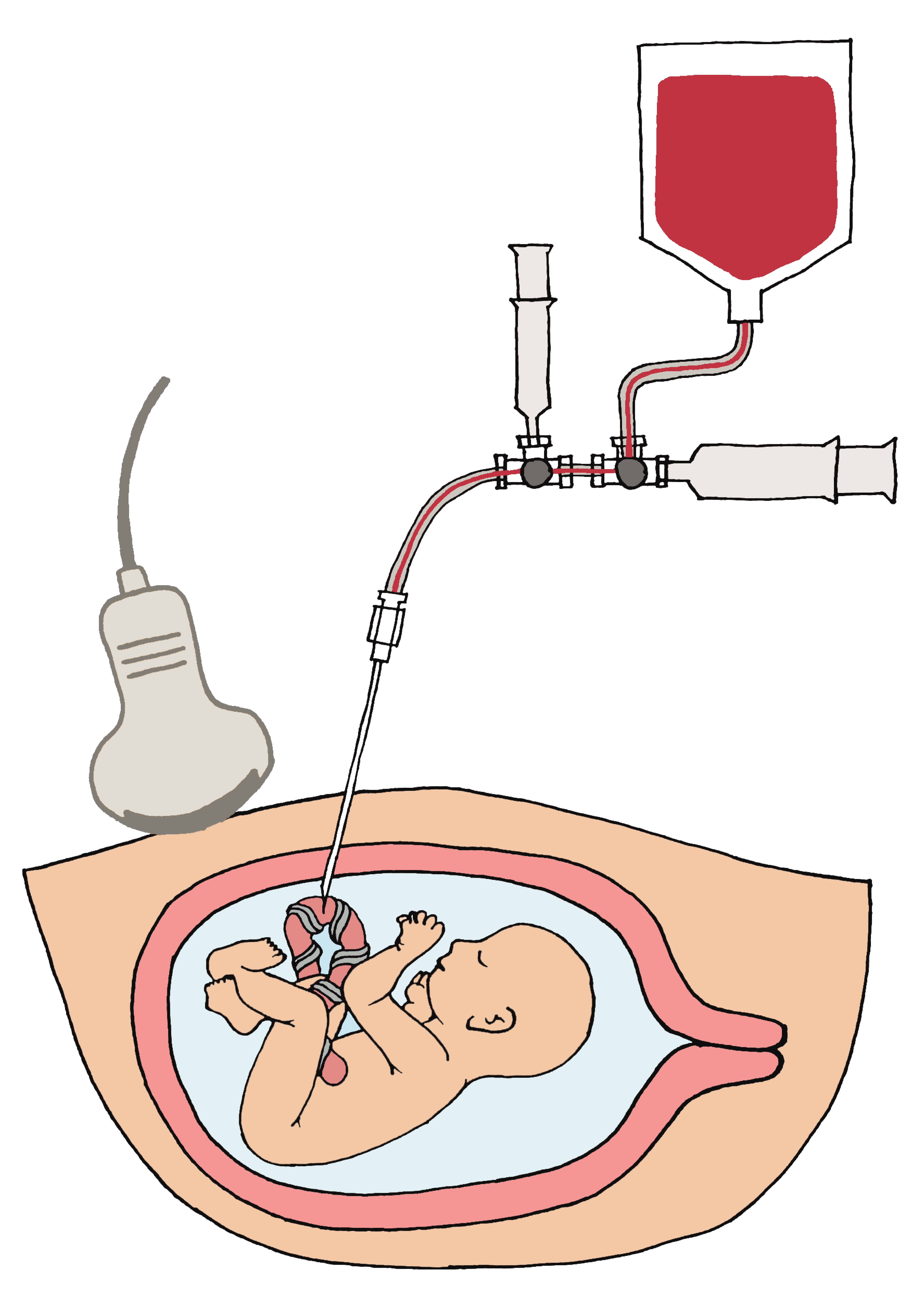Intrauterine Fetal Blood Transfusion (IUT)

A fetal transfusion is a life-saving procedure for unborn babies with a condition that destroys their blood. This is a highly specialised area of medical practice requiring close collaboration between experts in fetal medicine, haematology and blood transfusion, and rapid access to blood counting. Even in the most expert hands IUT carries a risk of fetal death/distress of around 3% per procedure. The risks are higher if the baby is already very sick before the procedure (hydrops). There is also a risk of premature birth. The fetal medicine team at St Michael’s Hospital in Bristol carry out this procedure for the South West of England and South Wales.
The majority of fetal transfusions are performed for two reasons:
- Haemolytic disease of the fetus: this is a condition where the mother produces blood cell antibodies which cross the placenta and destroy the baby’s blood. The objective of red cell IUT is to prevent or treat life-threatening fetal anaemia (hydrops fetalis) and allow the pregnancy to continue to a stage where a viable baby can be delivered (ideally at least 36 weeks gestation).
- Infection: the commonest infection that causes fetal anaemia is parvovirus B19. This virus causes a harmless infection in most children and adults called ‘slapped cheek’. However, if parvovirus is contracted during pregnancy and the mother is not already immune to the infection, there is a 1 in 20 chance that the baby may become anaemic. The baby might require a fetal transfusion, but in most cases the infection resolves without consequences.
How is it performed?
A couple of days before the procedure you will have a blood test so that the blood bank and select and prepare the appropriate blood type for your baby’s transfusion. On the day of the transfusion you are offered an antibiotic injection to minimise the risk of infection. The procedure is performed under direct ultrasound vision. After an injection of local anaesthetic the fetal medicine specialist will introduce a thin needle through your tummy and into a blood vessel of the umbilical cord, or into a blood vessel of the baby. The baby’s blood count is measured at the start of the procedure (called fetal blood sampling) to estimate how much blood needs to be given, the baby is given a short anaesthetic so that the baby stays still during the transfusion, and the blood transfusion is then given. The baby’s blood count is then measured at the end to confirm the correct volume of blood was given.
